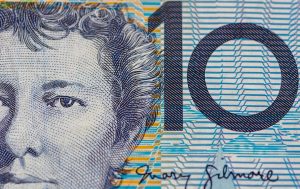The Euro has experienced a slight decline, hovering around $1.08, as traders digest the latest inflation figures and anticipate the future direction of monetary policy. February’s inflation rate in the Eurozone slowed for a second consecutive month to 2.6%, falling short of market expectations of a further drop to 2.5%. Additionally, the core inflation rate eased to 3.1% from 3.3%, against predictions of a decrease to 2.9%. These figures underscore the European Central Bank’s (ECB) cautious stance on loosening monetary policy.
Investors have adjusted their expectations, now predicting that the ECB will commence interest rate cuts in June, abandoning earlier hopes for a reduction in April. With the ECB’s upcoming meeting, market focus will shift towards any insights on the timing of interest rate cuts and new economic forecasts.
The Euro’s performance against the Japanese yen is noteworthy, as it has historically made gains in March, achieving positive results in 15 of the past 24 years. This pattern suggests a structural upside bias, although seasonality should be considered alongside other factors for a comprehensive analysis.
Recent comments from Bank of Japan’s (BOJ) Hajime Takata have sparked discussions about an overhaul of Japan’s ultra-loose monetary policy, including a possible exit from negative interest rates and bond yield control. While the timing of Japan’s departure from negative rates remains uncertain, the interest rate differential between the ECB and BOJ should limit the downside for the EUR/JPY pair.
The EUR/JPY is poised for a potential break above the February peak of 163.72 in the upcoming sessions, supported by positive fourteen-day momentum and the bullish alignment of the daily tenkan and kijun lines. However, a break below the 161.24 Fibonacci level could diminish the likelihood of a positive close for the pair in March.
The dominant trade of 2024 has been the unwinding of the dovish Federal Reserve repricing, leading to a rise in both the dollar and yields. Market expectations for the Federal Open Market Committee (FOMC) are now aligned with the bank’s projection of three rate cuts in 2024. The focus now shifts to what happens next, with a move from three to two cuts being a more challenging task.
This scenario places a limit on how much yields can rise from here, but it does not necessarily spell a negative outlook for the dollar. The same principle applies to other central bank rate pricing, although it may alleviate some downside risks for the yen, which has been consistently affected by rate trades.
Market volatility remains subdued as investors navigate from one event to the next, with Fed officials awaiting more data to determine the trajectory of inflation. Should inflation re-accelerate, the base case could shift to two rate cuts, potentially pushing both the dollar and yields higher.
The Japanese yen has weakened again, surpassing 150 per dollar, as BOJ Governor Kazuo Ueda emphasized the need for more data before concluding that the central bank’s 2% inflation target can be sustainably achieved. Ueda’s remarks highlight the importance of confirming whether a positive wage-inflation cycle will commence and strengthen, following Takata’s call for discussions on ending ultra-loose monetary policy.
As the BOJ adheres to ultra-easy monetary settings, the yen remains under pressure, especially when compared to other major central banks’ commitment to restrictive policies. The evolving dynamics of monetary policy and inflation will continue to shape the EUR/JPY outlook and broader currency market trends.





